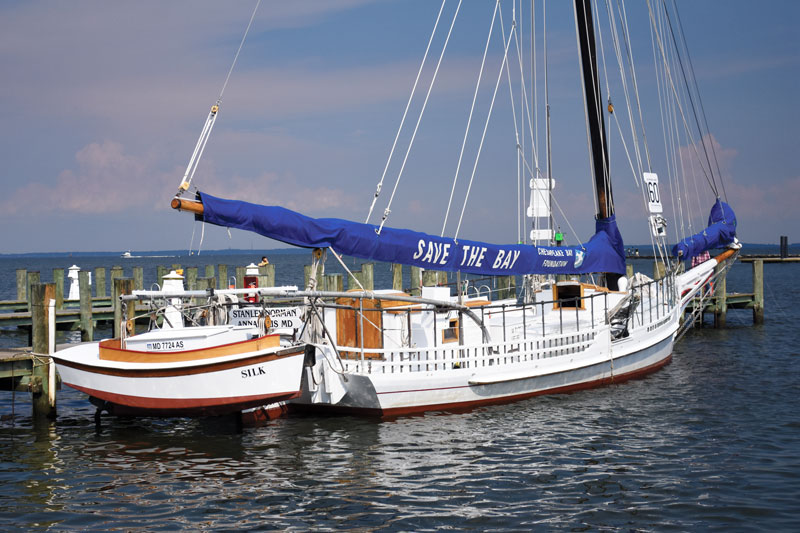The skipjack originated on Maryland’s Eastern Shore in the 1890s, and the Stanley Norman is one of the last of the Chesapeake Bay’s fleet. There were nearly 2000 skipjacks on the Bay when commercial oystering was at its height, but today less than 20 remain.

The Stanley Norman was built by Ottis Llyod in 1902 in Salisbury, MD. She was named for the original captain’s two sons, Stanley (born in 1896) and Norman (born in 1902).
At nearly 70 feet long with a mast height of 70 feet, the Stanley Norman is considered on the smaller size for a skipjack. To put that into perspective, the Stanley Norman could haul about 400 bushels of oysters, while a larger skipjack could haul nearly 1000. But that didn’t stop her from making impressive harvests over the years. Harvests across the Bay would ebb over time, but the skipjack remained an iconic symbol of Maryland and of the Chesapeake Bay.
Skipjacks are the last working boats under sail in the United States, and to recognize that legacy, the skipjack was named the Maryland State Boat in 1985. The Maryland General Assembly noted that: “Nothing better represents the way of life of Maryland watermen than the historic Chesapeake boat known as the Skipjack.”
In 1990, the Chesapeake Bay Foundation purchased the Stanley Norman to serve as a floating classroom to teach students about oysters, the life of a Chesapeake waterman, and Bay-related issues (environmental and otherwise) of the past, present, and future. Three thousand students board the skipjack annually and participate in programs on map reading, land use, watershed concepts, creative writing, and even get the chance to work a trawl net and conduct water-quality tests.
Stanley Norman captain Shawn Ridgely tells us that the day’s activities are based on what the students are learning in the classroom. If a science class is spending the day onboard, then they will break out the electronics and water-quality tests. If the class is more history-based, then students will get a chance to learn about the history of the skipjack and oystering on the Bay, as well as historical landmarks around Annapolis. The most active time of year for the Stanley Norman is while school is in session. During the summer months, much of the trips will be centered around teacher training and continuing education courses. If needed, major refits will take place on Tilghman Island in the wintertime, but minor repairs, such as replacing a few planks, can be carried out at Port Annapolis.
For more information on the Stanley Norman, click to cbf.org. And mark your calendars for the annual Deal Island Skipjack Race and Festival, September 2-4 in Deal Island, MD. Learn more at dealislandchancelionsclub.org.




